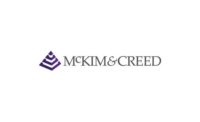The commitment for adoption and intentional advancement of JBA’s BIM expertise is rooted in the belief that the technology is one of the most significant developments for the current generation of building industry professionals. The initial adoption was challenging and executed with passion, not because of where the technology is today, but rather in the long-term view of the advancements that will come to life in the next five to ten years.
JBA recognized the significant paradigm shift associated with migration from 2-D CAD delivery, which utilizes graphic symbols to represent the built environment, to BIM methodologies that leverage a 3-D model populated with intelligent objects. The shift is very significant, since BIM technology has the potential for positive progress for all phases and all stakeholders in the building lifecycle. The forward movement for BIM technology started with the architecture and engineering phase of building development and has rapidly migrated to the construction and operations phases.
Although Revit for active building systems typically focuses on mechanical, electrical, and plumbing (MEP) disciplines, JBA made the commitment to launch the technology across all service offerings, including telecommunications, audiovisual, security/surveillance, acoustics, fire protection, and life safety systems. The MEP adoption is a challenge due to limited availability of quality content (intelligent objects) for the various equipment items and components that make up MEP systems. The content available with the Revit software, although growing with each release, is still very limited. Content proved even more challenging for the other active building systems included in JBA’s primary service offerings, as it is virtually nonexistent.
REAL-WORLD CHALLENGES
The BIM content challenge became glaringly obvious in early 2007 when JBA undertook its first heavy model for an enterprise data center serving a 15-million-sq-ft development. The data center was located at the base of a 3,200-room guest tower directly below the last level of guest rooms. It was clear the installation would be comparable to building a Swiss watch, with tight floor-to-floor height, convergence of tower infrastructure that occurs below the last level of guest rooms, and the active infrastructure that required driving a 300-cabinet data center deploying blade servers.
As part of the data center planning effort, JBA advised the owner that to ensure the infrastructure is coordinated and physically fits within the space, a BIM model needed to be developed. At the time, no one else on the project was working with BIM. As a result, JBA developed the model, including the pertinent structural and architectural elements to facilitate active systems modeling. The data center space power, HVAC, fire system, security, telecommunications, cabinets, racks, etc., were all incorporated in the model with content that was created in-house. The end result was a model that was invaluable in clarifying the complexity of the space.
After completing this model, JBA embarked on several BIM projects, including a historical theater refurbishment in New Orleans where it further pushed and developed its BIM capabilities. A key lesson learned was creating clarity around expectations and a level of development required for deliverables. There are substantial differences in development of a model for static/passive infrastructure that makes up the architectural and structural models as compared to MEP and other active building systems. The active building systems are end-to-end with complex equipment that has countless options that impact size and performance. Additionally, the sheer number of intelligent objects that can be modeled and the level of intelligence of the objects all impact the time for layering the active infrastructure into the base model.
LEARNING CURVES AND GROWING PAINS
One of the challenges was learning what can be done using BIM and what should be done in the context of capabilities of the BIM software. Some of the initial BIM projects ran into huge cost overruns as JBA learned the software, and in some cases, the engineers and designers were overzealous in pushing the technology to an extreme with no added value for the deliverables.
Another of the lessons learned was to ensure clarity of expectations and mutual agreement with the client regarding the level of development for the model. Cost controls were significantly improved by focusing on client education regarding value, effort, and cost associated with driving the level of detail beyond what was necessary, based on anticipated model leverage beyond design. At the outset, JBA was clear that adoption of BIM and developing fluency would require substantial investment in hardware, software, training, and inherent job cost overruns to ensure proficiency in BIM delivery.
JBA committed to invest in BIM since it believes the technology has potential for substantial gains in efficiency for the design phase and the entire building life cycle, particularly as the construction and building operations phases leverage the technology further.
The focus for the technology to date has been primarily around clash detection, collision avoidance, and coordination during the design and construction phases of projects. Depending on the project size, these savings typically occur over a 2- to 5-yr timeframe. The savings associated with improved design and construction makes a compelling argument for adoption of BIM technology. Once the model is leveraged to optimize maintenance and ultimately building performance, recurring savings for a 30- to 50-yr building life will be realized and the full value of BIM will be much more obvious.
MOVING FORWARD
One of the essential stages in the evolution of BIM is the progression of BIM content for the design and construction phases. To reach the goal of fully leveraging the BIM model for optimal building operations, the building product manufacturers’ content has to proliferate. Manufacturers need to provide quality content that is accurate, available in a low-burden file size, and loaded with relevant intelligence and context that meets the needs of designers/engineers, contractors, and, ultimately, endusers for building operations.
One of the major paradigm shifts is manufacturer engagement in engineering workflow and opportunities for manufacturers to have their catalog of information in the form of BIM content, inserted directly into the engineering deliverables during the construction documentation phase. In legacy CAD delivery, the typical approach was to create graphic symbols to represent manufacturers’ equipment, fixtures, and products for the construction drawings, with limited use of specific manufacturer information as part of the deliverables. Typically, design layouts are based on a specific manufacturer to serve as the design basis, and all manufacturers included in the specifications are required to work within the allocated space.
In the future, we anticipate a similar approach, but the design basis will be specific to manufacturers’ BIM content. If the contractor selects a different manufacturer than the one utilized for the design basis, they will be required to demonstrate that the manufacturer they intend to use complies with the design and physical space criteria via substitution of their BIM content into the model. Standardization of content remains a key hurdle for leveraging the BIM model for optimal facility operations over the building life cycle. Without standardized parameters, there are significant challenges in deploying third-party software to effectively mine the model for required information because the data is not in a consistent location or a standardized format.
Lack of standardization requires performance of a unique mapping process on a model-by-model basis, which is an extremely inefficient process. Lack of standardized content will inhibit broad based adoption of BIM models for facility maintenance and operational optimization. Organizations such BuildingSmart Alliance, NIBS, BICSI, ASHRAE, NEMA, and several others are working toward standards development, which is a monumental task.
JBA’s experience in BIM content development driven by necessity highlights that in order for the technology to really advance for active system designs, quality content needed to be readily available and accessible to the active systems design community. While manufacturers are the obvious experts for their specific products, based on the poor quality of BIM content currently provided by the manufacturers, it is clear that most lack the contextual knowledge to develop content that is effective, efficient, relevant, and complementary for engineering workflow. JBA saw this challenge as an opportunity and decided to start a separate company, BIMAdvent, focused on content development for manufacturers, software, and applications to optimize engineering workflow. Its vision is to be a leading provider of innovative resources for the intelligent built environment, while its mission is to optimize the building life cycle. BIMAdvent closely aligns with JBA, and together they help each other live out our shared core values of innovation and expertise.
In order for BIM technology to proliferate, BIM workflow needs to engage a broader audience including engineers, contractors, manufacturers, and endusers without requiring all to become experts in complex BIM software. The tools and resources that enable this engagement must be intuitive for the users and developed with context for legacy processes and workflow. A broad user base of engineers, contractors, manufacturers, and owner/operators are not going to willingly adopt an expensive new process that is laborious with a costly learning curve that is steep and long for the tools involved. We believe they will engage in minor shifts if the tools provided align and enable the users to execute their work in a similar manner. Manufacturers need their equipment and product data converted and captured in BIM content with minimal investment.
Collaboration between JBA and BIMAdvent enables beta testing and streamlining of content and applications that are tested in a real-world environment prior to being released to a larger user base. Quality content that is readily available to the specifying community, combined with the tools and resources that work in the context of legacy workflow for the professionals engaged in the various phases of the building life cycle, are key drivers to enable continued evolution of BIM.
It is our belief that in order for JBA to live its purpose of improving and protecting the human environment, it must live its core value of innovation by being aggressive drivers and thought leaders in BIM technology. The end goal is proliferation of BIM technology throughout the entire building life cycle to facilitate a less costly, more efficient, better managed intelligent built environment that serves as a legacy for this generation and a solid foundation for improvement by future generations. It is the collective belief of JBA and BIMAdvent that they have an obligation to live out the vision and purpose of both companies to facilitate a better future. ES





